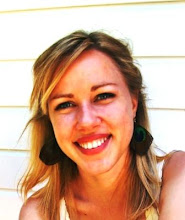The hiker ascending Costa Rica
This afternoon, with my husband of six days, I climb over and under downed trees. For several days, the park closed as high winds uprooted trees and felled thick limbs, but today is calm. There is something foreboding in the stillness of the green canopy, where so recently the violence of the wind brought the dumb trees to a pitched and groaning battle. We walk through a world muffled and tangled, a world secretive to strangers.
The secrets of these volcanic forests include pools of bubbling, breathing mud and, higher up, ancient craters scalloped from the heights in eruptions of fire and ash. In the vanishing views offered by the shifting mist, the water-filled craters appear from above as smooth and luminous as the faces of cut gems; the crater walls seems to drop into them as if in homage to beauty, and from their hot, acidic surfaces steam rises toward the cooler mist. When the volcano last erupted, it rained plumes of mineral-rich ash down upon its flanks. Now insects unknown to science hum and bore into the wind-felled trees. A delicate biology thrives improbably upon the marriage of wind, water, and fire, not unlike man holed up in his pockets of civilation.
In the middle of the forest a single ficus tree with two interlocking trunks has grown high into the canopy and deep into the earth. It gathers into its trunks all it can of sunlight, rain, and nutrients. It draws us to it to itself to marvel and gape. It is a kind of forest deity, the two-in-one god. Locals call it Los Gemelos, or The Twins.
Near The Twins we hear a large party of Costa Ricans descending the trail. They round a bend, and we see them. Their eyes are round and vanquished.
“Turn back!” they say to us, who would venture. “Turn back, because the trees are down, and the way is slick, so you cannot pass.”
Having come so far, however, my husband wants to continue. We gamble that we are tougher than those that the crater has turned back, a family party with an old man amongst them. So I follow my husband over the raspy girths of downed trees, through the damp softness of muddy earth, behind the opacity of emerald curtains.
Finally, after hiking for several hours toward the summit, we cross above the last of the big trees. We see where we have come. A bird rides the air currents down to the dry, golden plain of Guanacaste. A gulley, carpeted with green, passes away to the east.
Above the trees grow only stunted shrubs with oar-shaped leaves. The earth is pink as a blood-soaked napkin, and fissured by a muddy watercourse which we traverse slowly, marking off the yards in roots for grasping. Slick ledges for toes. We make halting progress. Streaked with earth, I nearly cease to believe in the warm, humid, arboreal tent and sweet, loamy footpaths of this morning, effaced as they are by the chill, eager billows of descending cloud.
We rise up to the lip of the crater where nothing grows. It is a trackless, lunar ground, the unfriendly slope of a perfect cone. The wind has become a personal malevolence, and it hurls itself across the ground with a force I have never felt outside of a hurricane. Its noise rises like a pained cry and falls like stitches are being ripped from a garment. I halt and double over, afraid that if I stand up the wind will get a firm enough hold to toss me off its hip. My husband leans into the slope above me, zigzagging between rocks. Every several paces he stretches a long-fingered hand to the loose ground, as if ascertaining the reality of the earth in a dreamscape. He turns to look for me. The mist passes before him. Obscures him. He calls something that the wind carries away, so that his voice sounds to my left instead of above me. I hesitate, then struggle up to where he waits for me. We brace ourselves together against a fresh lash of wind. His thick hair flattens over his brow with the gust, and I laugh.
We are here on the edge of the cold, white abyss beyond the trees and all wise admonitions. All this whiteness! The cloud has erased everything, and there are no longer in the world any signs of life, of green, or warmth. There is only me and the man I said vows to at a church six days ago, who is still nearly a stranger. And there is our mysterious covenant to conquer this whiteness, and not to be plucked from it. How naked and doomed and brave now seems the pact between us, set down in a world that will never in truth offer us more clarity and hospitality than this cold and truncated circle! From whence will we draw the strength to arise from our isolation day after day and go to succor each other? The vows he and I have repeated seem but fragile links forged in a tender hour: a wind could tear them up, a fire burn them. Now we have climbed up above our heedlessness.
Yet we are together now. Somehow because of that sole fact I am not afraid. Together we dare the fierce wind and the white cloud and the universe to sunder us if they can. We may thrive improbably against all the violence. This absurdity and this unquenchable comfort are in my laughter hunched over on the rough, sliding stones. I read in the curve of my husband’s answering smile a similar exhilaration, a secret to bear down between us through the forest and among the habitations of men.





